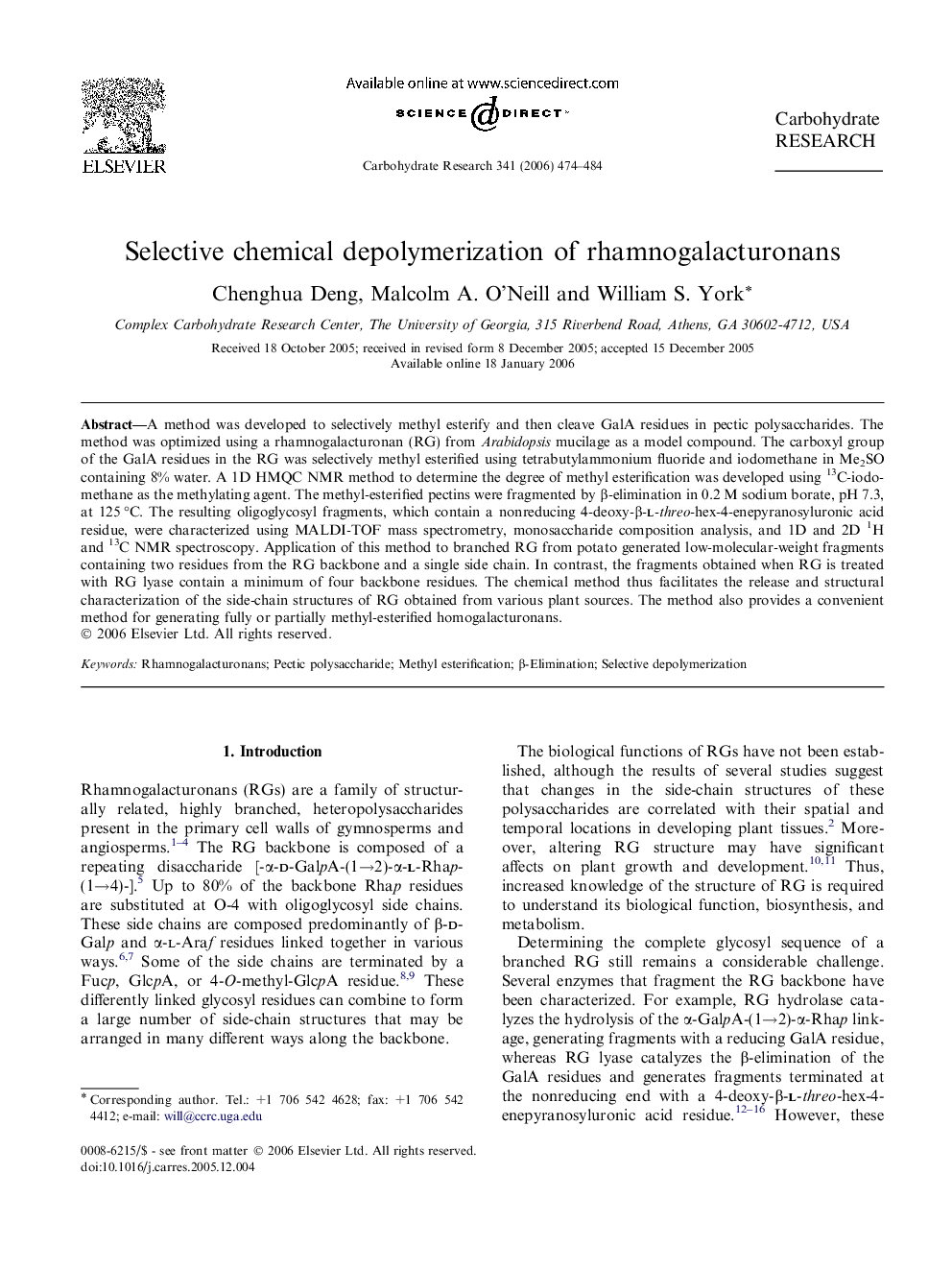| Article ID | Journal | Published Year | Pages | File Type |
|---|---|---|---|---|
| 1389532 | Carbohydrate Research | 2006 | 11 Pages |
A method was developed to selectively methyl esterify and then cleave GalA residues in pectic polysaccharides. The method was optimized using a rhamnogalacturonan (RG) from Arabidopsis mucilage as a model compound. The carboxyl group of the GalA residues in the RG was selectively methyl esterified using tetrabutylammonium fluoride and iodomethane in Me2SO containing 8% water. A 1D HMQC NMR method to determine the degree of methyl esterification was developed using 13C-iodomethane as the methylating agent. The methyl-esterified pectins were fragmented by β-elimination in 0.2 M sodium borate, pH 7.3, at 125 °C. The resulting oligoglycosyl fragments, which contain a nonreducing 4-deoxy-β-l-threo-hex-4-enepyranosyluronic acid residue, were characterized using MALDI-TOF mass spectrometry, monosaccharide composition analysis, and 1D and 2D 1H and 13C NMR spectroscopy. Application of this method to branched RG from potato generated low-molecular-weight fragments containing two residues from the RG backbone and a single side chain. In contrast, the fragments obtained when RG is treated with RG lyase contain a minimum of four backbone residues. The chemical method thus facilitates the release and structural characterization of the side-chain structures of RG obtained from various plant sources. The method also provides a convenient method for generating fully or partially methyl-esterified homogalacturonans.
Graphical abstractFigure optionsDownload full-size imageDownload as PowerPoint slide
